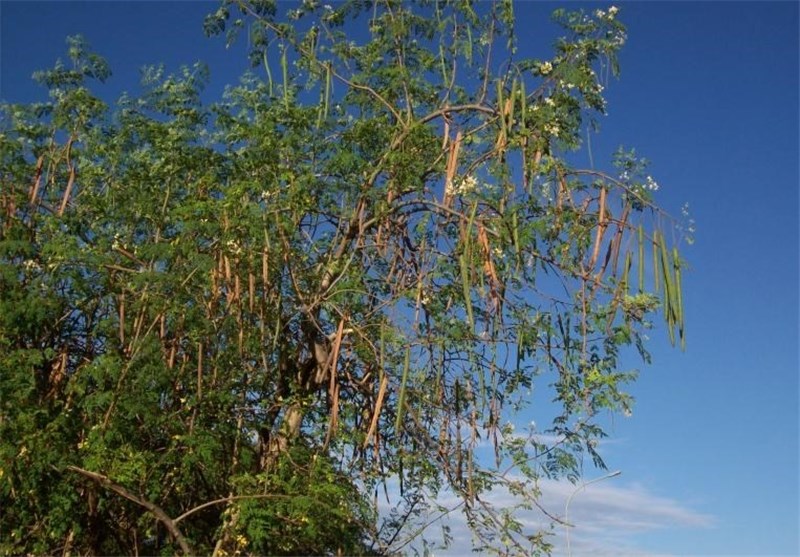Moringa Tree Seeds Used in Water Purification Process
TEHRAN (Tasnim) – A team of researchers found that seed material from Moringa oleifera trees can give a more efficient process for water purification than conventional synthetic materials in use today.
Clean water is essential for good health. In many countries it is still difficult to obtain clean water. Even developed countries can benefit from a process that treats waste water without addition of further synthetic chemicals.
In a project lead by Uppsala University, scientists from several countries have investigated how an extract from seeds of Moringa trees can be used to purify water. A protein in the seeds binds to impurities causing them to aggregate so that the clusters can be separated from the water.
The study recently published in the journal Colloids and Surfaces takes a step towards optimization of the water purification process. Researchers have studied the microscopic structure of aggregates formed with the protein.
The results show that the clusters of material (flocs) that are produced with the protein are much more tightly packed than those formed with conventional flocculating agents. This is better for water purification as such flocs are more easily separated.
The new study compares protein from the seeds of different varieties of Moringa trees that are grown in different countries. It also allows estimates of the optimum amount of seed extract that should be used to minimize residues in treated water.
There is a broad interest in new, sustainable methods for water treatment. The research group has already presented results to government agencies and public bodies, particularly in Namibia and Botswana. There are now discussions on best use of Moringa seeds, both to substitute conventional materials in large water treatment plants and in small scale units.
"We can envisage that similar materials could be used in Europe both to produce drinking water and to treat wastewater," Professor Adrian Rennie said.
"Neutrons are an ideal tool for understanding the internal structure of these complex organic aggregates thanks to a contrast matching technique that only highlights the protein components absorbed to the particles," Dr Lionel Porcar from the Institut Laue-Langevin noted.
"Additionally the use of Ultra Small Angle Neutron Scattering allowed the mechanism of aggregation of these large flocs to be followed non-invasively," he added.





